Shrouded in legend and steeped in history, Amir Temur's signet ring has long captivated the imagination of Uzbeks and historians alike. Crafted from gold and adorned with a jade stone, this exquisite artifact was more than just a symbol of power—it carried the weight of an empire. From sealing royal decrees to surviving centuries of intrigue, the ring’s journey across continents is as fascinating as the stories surrounding its origins.
But how did this iconic piece of the Timurid legacy end up in a New York museum? The tale behind Amir Temur’s ring is a labyrinth of historical records, daring thefts, and modern recreations—each piece of the puzzle revealing the enduring legacy of the Sahibqiran.

The Signet Ring
Fayzullo Faromarzi, a doctoral student at the Tashkent State University of Oriental Studies, notes that while there is no concrete scientific information about the maker of the ring or how it came into Amir Temur's possession, some historical accounts offer insights.
"In the Middle Ages, each monarch had a distinctive ring, which served not only as an ornament but also as a seal for signing royal documents. Once this seal was applied, the document became legally binding. Additionally, the seal was used to authenticate letters sent by the ruler to other kings or to provincial governors," explains Faromarzi.
According to historical sources, the Sahibqiran ring was one of the key symbols of Amir Temur's kingdom, and he wore it constantly. This ring was gifted to him by one of his revered spiritual guides, Sheikh Zainiddin Abu Bakr Taybadi.
Amir Temur's military campaigns between 1399 and 1404 led to the conquest of major cities across Sham, Iraq, the Arabian Peninsula, and the Ottoman Turkish Empire. The rulers of the Genoese colonies on the islands of Chios and Lesbos in the Aegean Sea surrendered without resistance, and Egypt also fell under his control. After five years of warfare in Asia Minor, Amir Temur returned to Samarkand and, on November 27, 1404, set out for China with an army of 200,000 soldiers. However, heavy snowfall halted his progress, and he was forced to remain in Otror for an extended period. During his stay, he caught a cold and tragically passed away on February 18, 1405.
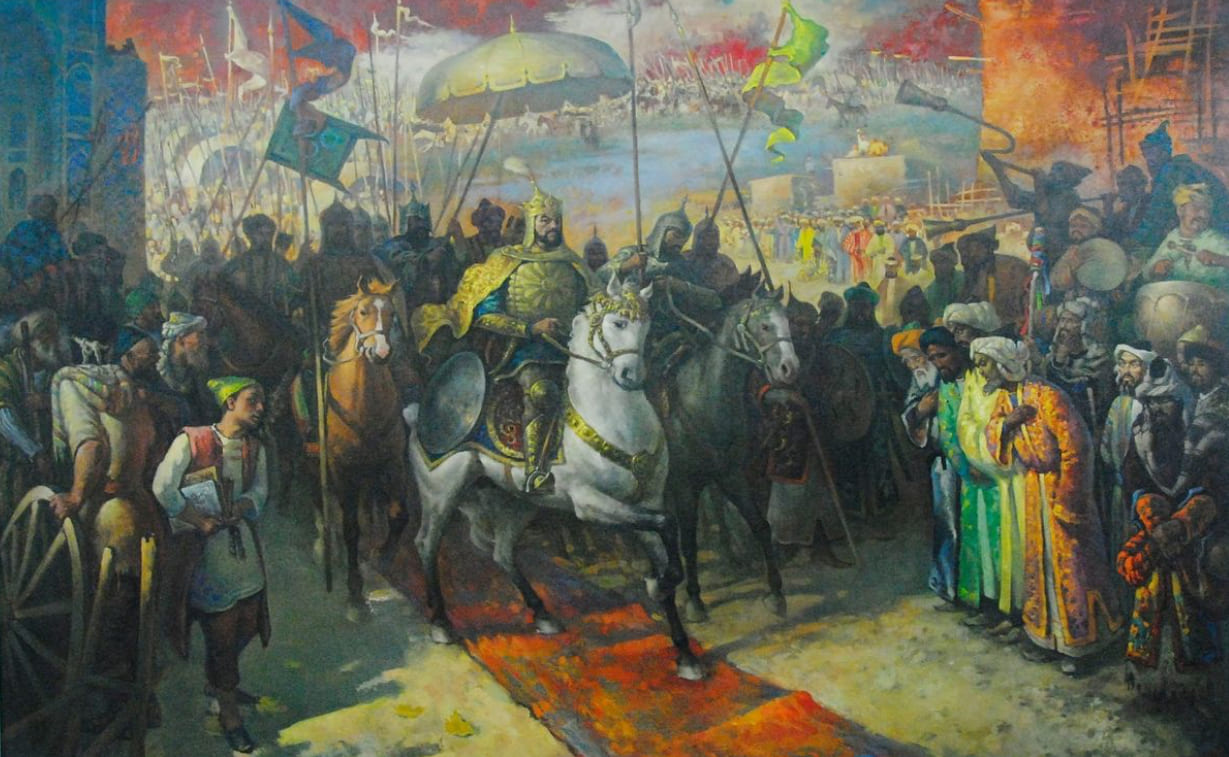
In his work Ajayib al-Maqdur fi Tarikhi Temur, historian Ibn Arabshah recounts that, according to Amir Temur’s will, Saraymulkhanim, Amir Shahmalik, and Amir Sheikh Nuriddin met in Otrar. They followed the owner's wishes by sending his ring, bearing the seal of the kingdom, along with his sword and horse, to Shahrukh Mirza in the city of Herat.
However, the exact timeline of when these items reached Shahrukh Mirza and their fate thereafter remains unclear. What is known is that the ring eventually came into the possession of Husayn Bayqara, as evidenced by its discovery on his hand during archaeological excavations.
Some reports claim that when Husayn Bayqara died, the ring was so firmly attached to his finger that it could not be removed. Courtiers even suggested cutting off his ring finger, but scholars opposed this idea, and the ring was buried with him.
A Legacy from Oghuz Khan
According to historian and academic Inoyatillo Shahrani, the ring originally belonged to the Turkish khan Oghuz Khan. After his death, the ring passed down through generations, eventually reaching Khalid ibn Barmak in the 9th century. Khalid, the finance minister during the Abbasid caliphates of Abul Abbas Abdullah and Abu Ja'far Mansur, is said to have come into possession of the ring through a remarkable story.
According to legend, a Turkish prince visited Baghdad and requested an audience with Khalid ibn Barmak. Upon entering the minister's reception hall, a device attached to Khalid’s knee—designed to warn him of any danger, including poisons—began to vibrate. Following the minister's orders, the guards detained the prince and discovered the ring on his hand.
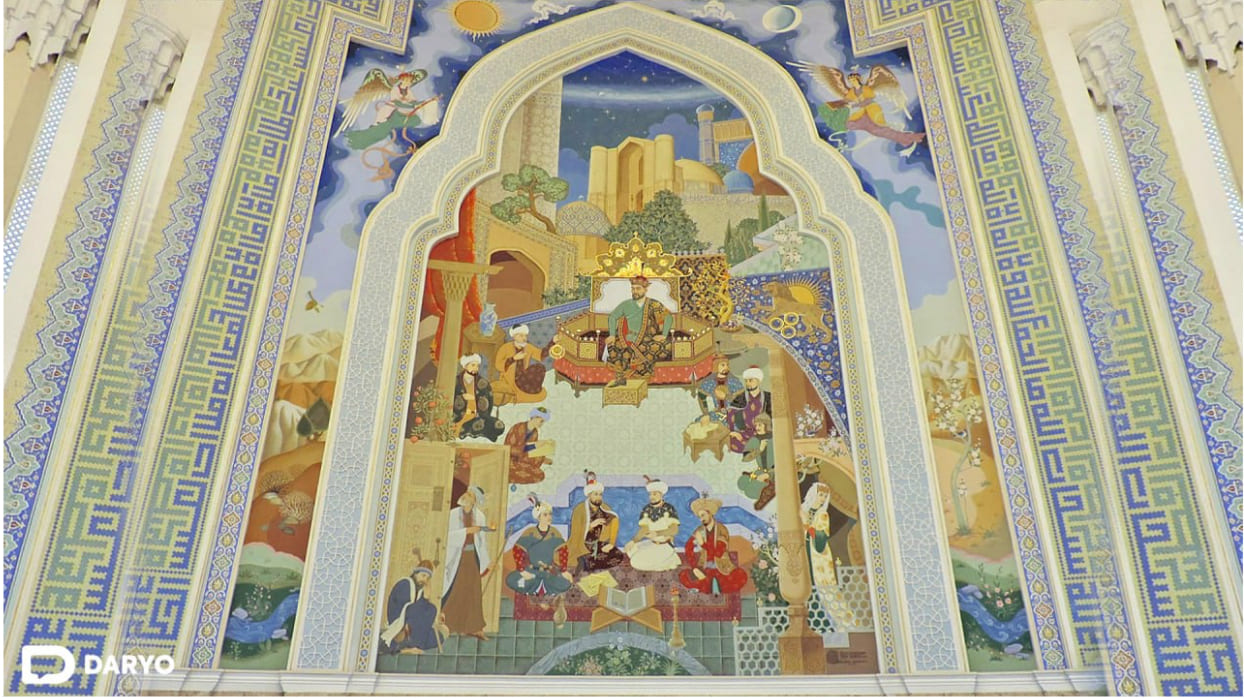
Upon further inspection, it was found that the ring contained a precious gemstone and a hidden compartment designed to store poison. The device worn by Khalid and the prince's ring both had the same power: they could instantly alert their owners to external and internal threats, such as poison being added to food.
Historian Abdullah Olim noted in a 2006 Jahon Liyatari magazine article that the Sahibqiran ring described in historical sources shares distinct characteristics with the ring found on Husayn Boykara’s hand. This connection was convincingly demonstrated by Afghan scholar Khalillo Khalili, whose family heritage traces back to Bukhara.
Opening of Husayn Bayqara’s Grave
In 1965, an international conference on manuscripts was held in Herat to commemorate the thousandth anniversary of Khwaja Abdulla Ansari, an esteemed Sufi mystic from Herat. During this event, Afghan King Mohammad Zahir Shah (who ruled from 1933 to 1973) proposed opening the graves of Sultan Husayn Boykara and Mir Alisher Navoi to conduct research. Following this proposal, an esteemed group of experts, including Reza Moyil Hirovi, Allama Khalillo Khalili, Academician Salahuddin Seljuqi, and Ziyovuddin Khan ibn Eshan Bobokhan, gathered to witness the exhumation.
While there was no pressing need to open the graves of these Timurid figures, Zahir Shah authorized it, ostensibly in honor of Ansari’s anniversary. However, it is widely believed that Zahir Shah knew the ring of the Turan ruler, Amir Temur, had been passed down through generations, ultimately reaching Husayn Bayqara and being buried with him. According to eyewitnesses, the true aim of opening the graves of the renowned Timurid ruler and the poet known as the “Sultan of Ghazals” was to recover Amir Temur’s legendary ring.
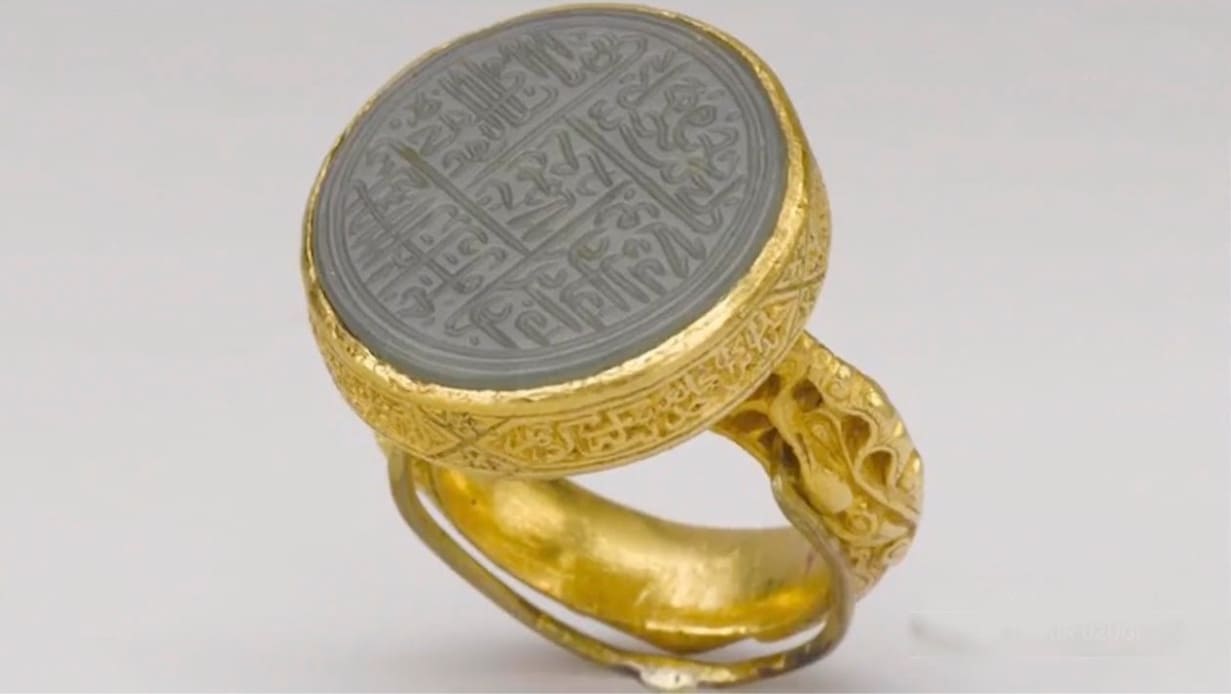
There is speculation that Zahir Shah orchestrated the conference as a cover to avoid criticism for opening Boykara’s tomb solely to retrieve the ring. Those present during the event reported that, upon opening the grave, a peculiar ring was indeed found on the index finger of Husayn Bayqara’s right hand. Khalillo Khalili presented this remarkable find personally to Mohammad Zahir Shah.
Mohammad Zahir Shah held onto the ring until 1973. That same year, while he was on an official visit to Italy, his nephew, Mohammad Daoud, seized the chance to stage a coup and take control of Afghanistan’s throne.
According to Abdulhamid Mubariz, former Deputy Minister of Culture in Afghanistan, Zahir Shah—who was forced into exile in Rome after the coup—wrote to his nephew on May 27, 1974, expressing his wishes for Daoud’s success and politely requesting the return of a rare manuscript and the precious ring left on his desk. This letter went unanswered.
Historian Faizullo Faromarzi notes that General Muhammad Zia, then Commander-in-Chief at Kabul’s "Arki Shahi" Palace, learned of the letter, stole the ring, and secretly fled to Austria. Soon after, the ring surfaced in an Austrian museum before mysteriously vanishing.
Prominent Afghan historian Nurillokhan Tolkani wrote that Temur’s ring was sold to an Austrian museum for a substantial sum. Some experts believe Zahir Shah himself might have sent this unique artifact to an Italian museum as a gift.
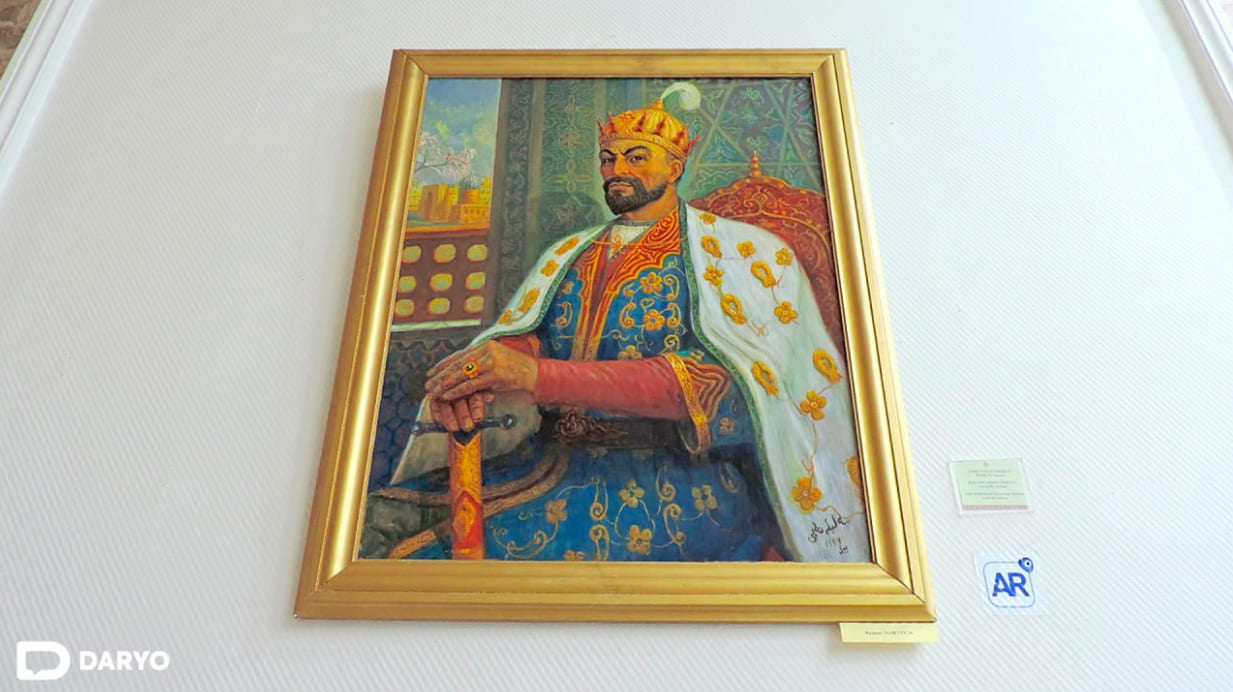
"Rosti Rasti" does not mean "Strength is Justice"!
In an interview with journalist Rozbiboy Koldashev, writer Pirimqul Qadirov explained that Amir Temur’s ring bore the Persian inscription "Rosti Rasti," meaning "If you are honest, you will be saved," interpreted as "Strength is in justice." Dr. Akhmadjon Kuronbekov and researcher Abdulla Olim have both suggested that "Rosti Rasti" reflects this same meaning. However, Faizullo Faromarzi, a doctoral student at the Tashkent State University of Oriental Studies, challenges this translation.
Faromarzi clarifies that while "Rosti Rasti" is indeed written on the ring, translating it as "Strength is in justice" misinterprets the Persian grammar. Instead, he argues, the phrase means, "If you are right, you will be saved." This misinterpretation has led many to mistakenly associate the phrase with "Strength is in justice."
How Did the Timurid Ring Reach the USA?
Today, Amir Temur’s precious ring is housed in the Metropolitan Museum of Art in New York. In June 1990, Dr. Pirmat Shermuhammedov spoke with Shukriya, daughter of Sayyid Muzaffar Olimkhan, Bukhara’s last emir, who shared how the ring ended up at the museum.
After the 1973 coup in Afghanistan, Mohammad Daoud retained the ring, and it was not returned to Zahir Shah. Through a call to Zahir Shah in Rome, Shermuhammedov learned that General Muhammad Zia, aware of the ring’s value, attempted to sell it in Austria. The Louvre and the British Museum expressed interest, but Zia, dissatisfied with their offers, ultimately sold it in New York with the help of a wealthy sponsor.
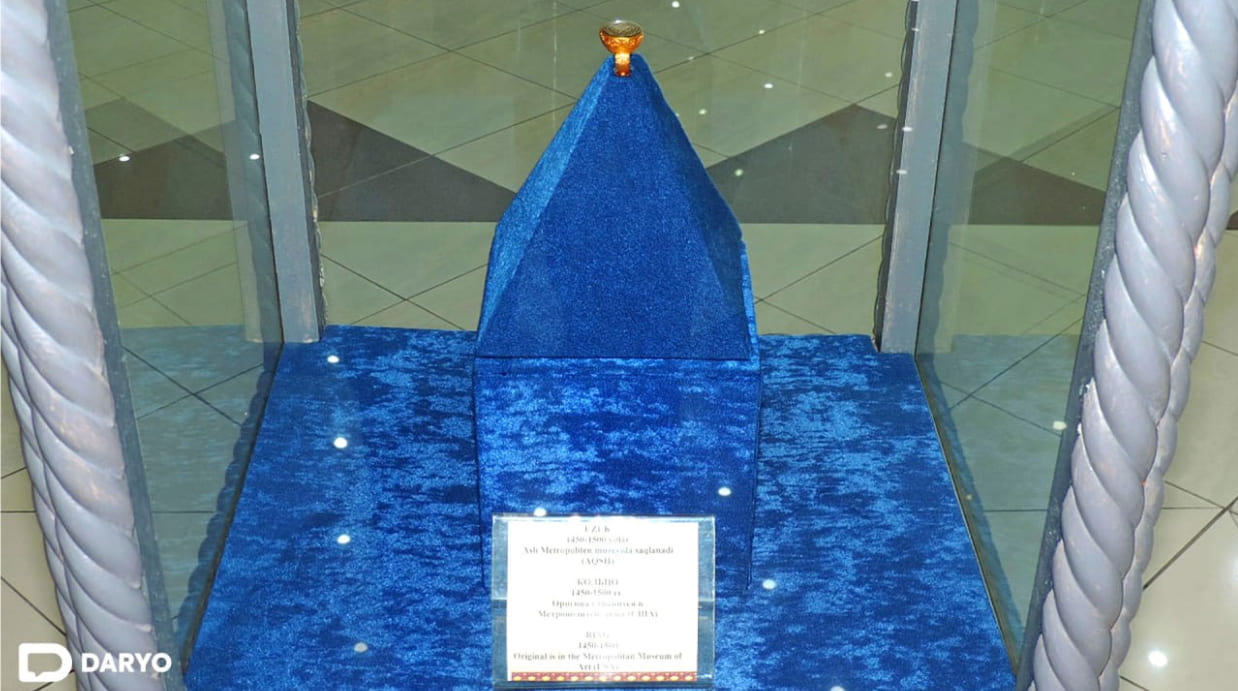
A Rare Piece Reimagined
In a 2018 interview, Uzbekistan’s renowned jeweler Fasihiddin Dadamuhammedov recounted his visit to the Metropolitan Museum, where he saw Amir Temur's ring and photographed it. Inspired by this visit, he aimed to recreate a copy of the ring. Although Dadamuhammedov successfully recreated signet rings belonging to Shahrukh Mirza’s wife Gavharshad Begum and Mironshah Mirza, it's unclear if he managed to complete the replica of Amir Temur’s ring.
A duplicate of Amir Temur’s ring can be found in the State Museum of Timurid History, though the exhibit provides no information on its creator. Kashkadarya-based artisan Sharifjon Raupov is among the skilled craftsmen who have successfully recreated this iconic piece.
"To restore such ancient and rare artifacts, I dedicated considerable time to studying official websites of prominent museums, as well as books and journals," says Raupov. "In 2017, I read about the rings of our ancestors, and the idea of replicating this original ring became a passion. After four months of tireless research, I finally crafted a replica, aiming to replicate every detail—the intricate patterns on the collar, the Arabic inscriptions on the edge, and the jade seal on the ring’s face."
With this creation, the young craftsman from Guzor participated in the 1st International Crafts Festival held in Kokand in 2019, where he won the "Youngest Craftsman" award. Sharifjon Raupov is highly celebrated for restoring over 400 traditional Uzbek jewelry designs, many of which are now housed in renowned museums around the world.
Written by Jamshid Niyazov
Follow Daryo's official Instagram and Twitter pages to keep current on world news.
Comments (0)